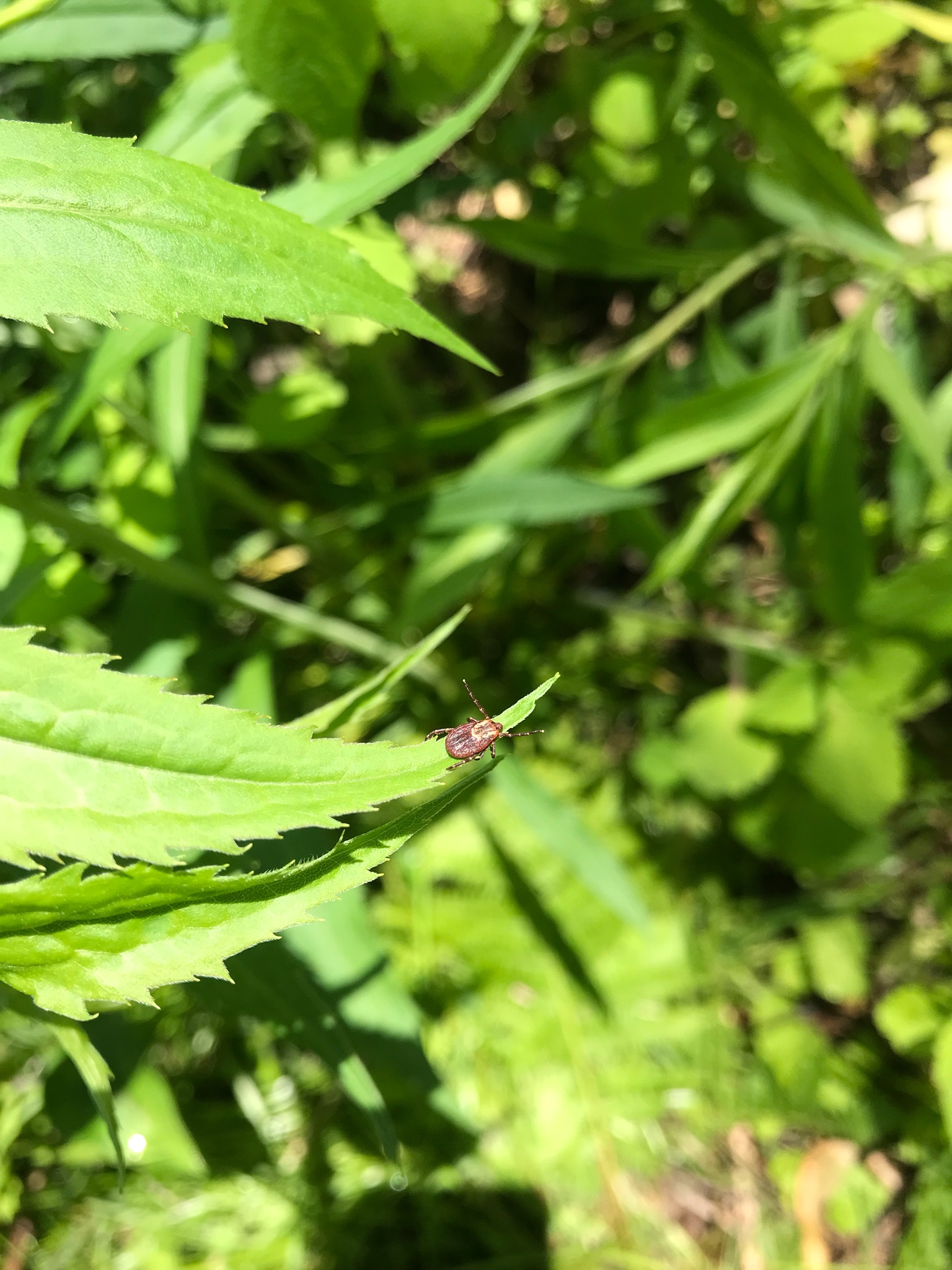What is Lyme Disease?

Lyme disease is a tick-borne disease most often transmitted by the blacklegged (deer) tick. It is caused by the bacterium Borrelia burgdorferi and Borrelia mayonii. These bacteria are referred to as spirochete bacteria because of their flexible, spirally twisted shape. It is this shape that allows the bacteria to actively move from one location to the next within the body.
How is Lyme Disease Transmitted?
Both blacklegged ticks and small mammals can carry Lyme disease. The most common small mammal known to carry Lyme is the white-footed mouse. When an uninfected blacklegged tick feeds on an infected mammal, it contracts Lyme. It is then able to spread the disease to uninfected white-footed mice and other animals such as dogs and humans.
When Borrelia burgdorferi infects a tick, it remains inactive within the gut. As the tick begins to feed, the warmth and pH of the blood activates the bacteria causing it to replicate and spread from the stomach to the salivary glands of the tick.
This process takes 18-24 hours after which time, the disease is able to move from the salivary glands of the tick, to the host.
What are the Symptoms of Lyme Disease?
Once inside the human host, Lyme disease progresses through 3 distinct stages.
1. Early Localized Lyme

The first and most common symptom of Lyme disease is the red bullseye rash that occurs at the site of infection in 70-80% of infected individuals. The bacterium infects the endothelial (skin) cells causing redness, and disseminates (moves) away from the site of infection giving the appearance of a bullseye.
Other early Lyme symptoms include flu-like symptoms such as
• Fever
• Chills
• Fatigue
• Headache
• Muscle and joint aches
Symptoms may begin 3-30 days after exposure.
2. Early Disseminated Lyme
Using its flexible, spirally twisted shape the infection is able to move throughout the body to distant sites including the joints, eyes, heart, nervous system, and other areas of the skin away from the site of tick attachment. This stage will normally occur a few weeks after initial infection.
3. Late Disseminated Lyme
If left untreated, the disease can go dormant in the areas it has infected causing symptoms to reappear weeks, months, or years after stage 2 Lyme.
Disease progression can lead to
• Arthritis of the joints
• Lyme encephalopathy
• Nervous system complications
• Issues with cognition such as memory and focus
Is There a Test For Lyme Disease?
Most often, clinical signs and a history of exposure will be the key to diagnosis. If Lyme is suspected, a 2-part test can be performed for confirmation (see below).
1. EIA- Enzyme Immunoassay
When performing an EIA test, a sample of blood will be taken from the patient and tested for antibodies produced in defense against Lyme disease.
If the test produces a positive result, an Immunoblot/Western blot test must be run to confirm.
A false positive may occur if the patient has other medical conditions such as
• Syphilis
• Autoimmune disorders
• Anaplasmosis
• Tick-borne relapsing fever
• Helicobacter pylori
• Epstein Barr
• Treponema denticola (infection of the gums)
• Bacterial endocarditis
• Leptospirosis
2. Immunoblot/Western Blot
Immunoblot/Western blot exams can test for two different antibodies produced in defense against Lyme disease.
IgM antibodies are produced within the first month of infection. They are more likely to produce a false positive and can only be tested for within the first 4 weeks after exposure.
IgG antibodies are produced 1-2 months after exposure and are more accurate in confirming Lyme disease in a patient. Unfortunately, a test of the IgG antibodies cannot be performed right away.
If the IgM test is positive but the IgG test is negative, the patient is unlikely to have Lyme disease.
Both the EIA and Immunoblot/Western blot tests must be positive in order to diagnose a patient with Lyme disease.
What is the Treatment for Lyme Disease
The CDC recommends the use of antibiotics when treating Lyme disease.
Antibiotic Treatment for Adults
Doxycycline 100mg- 2x daily
Cefuroxime axetil 500mg- 2x daily
Amoxicillin 500mg- 3x daily for 10-21 days
Antibiotic Treatment for Children
Doxycycline 4mg/kg divided into 2 doses daily
Cefuroxime axetil 30mg/kg divided into 2 doses daily
Amoxicillin 50mg/kg divided into 2 doses daily for 10-21 days
Antibiotics should only be used if there is good reason to suspect Lyme disease. It is not recommended to take antibiotics every time a tick bite occurs as a cautionary measure if there is no suspicion of Lyme transmission.

